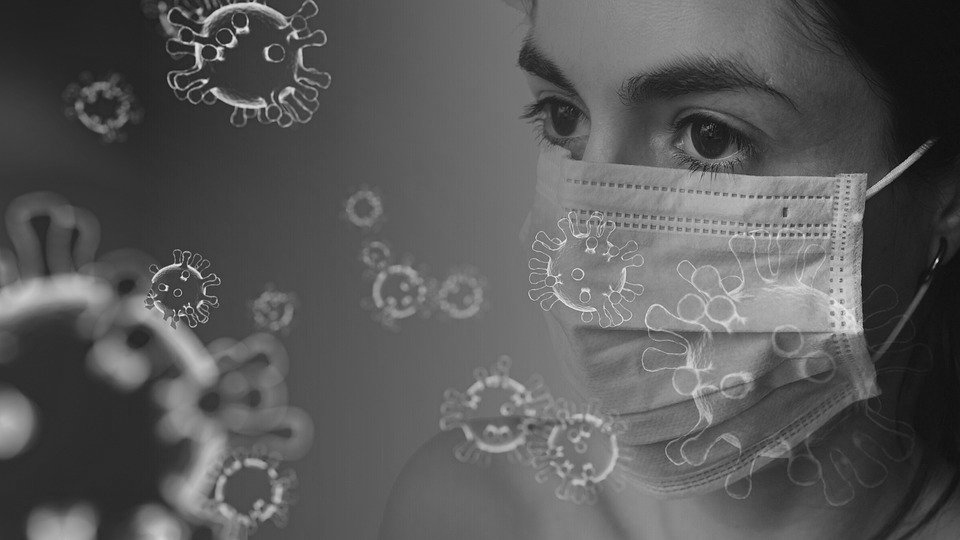
Getty Images
In the midst of the coronavirus pandemic normal routines seem like a distant memory for many. The same holds very true for medical imaging operations. Across the country hospital radiology departments are challenged to balance the volume of incoming patients who are ill with COVID-19 with the complexities of carefully managing infection control in a busy imaging department. Meanwhile, waitlists for non-urgent and routine imaging studies are growing out of control.
Front-line workers, personal protective equipment and disinfectants are essential resources for treating patients and ensuring continued safe operations. However, a lesser recognized but important asset that has emerged is the medical imaging data that is being generated throughout the diagnosis and treatment of afflicted patients. This data can provide the needed information to optimize the management of high volumes of complex patients, as well as deep insights into symptom and disease tracking, treatment efficacy and the long-term effects on our population.
Data-Driven Management of COVID-19 Operations
The convergence of imaging, lab and electronic health record (EHR) data from across the continuum of care is not only allowing healthcare providers immediate care to affected patients — it also contains valuable information regarding how rapidly changing operations can be adjusted and optimized to better manage capacity while reducing exposure risk for patients and providers alike. For instance, changes in imaging room sanitization protocols related to COVID-19 that can add up to 30 minutes between patients. By analyzing inpatient imaging orders, monitoring modality throughput and balancing available human resources operations, managers can more effectively optimize schedules and coordinate with floor nurses to maximize throughput while reducing exposure risk for both patients and hospital staff. Order data can inform imaging appropriateness and prioritization criteria to ensure the most urgent patients are imaged quickly, as well.
Many datapoints exist within most medical imaging ecosystems and can provide real-time insights into operations, helping to uncover opportunities for optimization and improvement, such as:
• Monitor and standardize procedure times, prep times and idle times for room/modality decontamination procedures;
• Track any ordered but not-yet-performed requisitions vs. wait-time and triage indications;
• Identify room or modality capacity planning in areas of less traffic and/or with better isolation;
• Proactively model and plan resource requirements during surge periods; and
• Quantify positive and negative COVID-19 related findings across imaging modalities (such as computed tomography (CT), X-ray and ultrasound) to drive evidence-based imaging best practices and ordering appropriateness.
Managing the Mounting Imaging Backlog
Meanwhile, while hospitals are grappling with balancing inpatient operations, it is estimated that up to 60-70 percent of outpatient and non-surgical imaging has been deferred, amounting to tens of thousands of patients who will be waiting in queue for their exams once operations resume. Multiply that by the number of hospitals across the country, and this adds up to a big problem impacting the health of the population.
Once imaging operations resume, prioritization that focuses on imaging the patients with the most worrisome or risky conditions first will be essential to ensure continued quality of care and outcomes. As well, there will be increased risk that patients with previous follow-up recommendations or incidental findings could be overlooked as the tidal wave of imaging orders are processed. Some hospitals have already begun this process, recruiting physicians to manually protocol and prioritize the order backlog or hiring staff to manually read reports for follow-up recommendations. However, this has proven to be an insurmountable undertaking given the imbalance between the number of available physicians to perform this task and the volume of incoming daily orders.
By retrospectively analyzing the previous 6-12 months of an organization’s imaging data and capturing new information with each exam, insights into the attributes and indicators of clinical urgency could be extracted that could then inform evidence-driven protocols for exam prioritization. Such evidence could also be leveraged to reinforce clinical decisions when wait times are inevitably questioned by patients and referrers, or (heaven forbid) a medical-legal issue related to imaging delays arise.
Moreover, automation of imaging backlog prioritization can also take into account critical results and follow-up recommendations, ensuring no diagnosis or treatment falls through the cracks — which is a concerning yet likely problem given the sheer volume of imaging exams to be performed and interpreted, and the continued pull of COVID-19 management that will persist for months to come.
Some examples of data-driven insights that could be gleaned from medical imaging data to assist in managing the post-COVID-19 backlog include:
• Identify and prioritize clinical urgency based on reason for study, ordering protocols, or patient demographics and clinical history;
• Track follow-up cases based on categories such as clinical or imaging follow-up requirements, unknown or ambiguous follow-up requests, completed or to be disregarded;
• Identify outpatient exams and physician referral and follow-up patterns, and monitor for appropriateness; and
• Inform AI-driven follow-up management providing evidence-driven information including reason, procedure timeframe and completeness of reporting standards for quality improvement programs.
Building a Foundation for Ongoing Monitoring and Research
The same data that can inform operations optimization and assist in prioritizing the growing backlog can also enable healthcare providers and researchers to learn more about the novel disease, including the variation in symptoms and severity among patients of varying ages and backgrounds; which treatment protocols and medications are most effective, and which could be harmful; what residual effects and comorbidities might exist for patients who have recovered; and eventually the efficacy of new-to-market drug therapies and vaccines that are currently under development.
The wealth of medical imaging data being collected today, and in the future, can provide immeasurable value for clinical researchers, enabling them to:
• Correlate imaging and lab results to identify patients with true positive and negative results within imaging examinations to ensure statistical accuracy;
• Track disease duration, severity and outcomes based on patient demographics, predispositions and comorbidities;
• Track treatment efficacy and monitor the long-term impact of COVID-19 on recovered patients;
• Evaluate or find patients based on the presence of comorbidities such as COPD, pulmonary fibrosis, pulmonary hypertension and complications from COVID-19 such as new fibrosis, ARDS, effusions or lung abscesses; and
• Identify cohorts for future research (such as combined drug testing and radiological findings).
Unlock the Current and Future Value of Your Medical Imaging Data
One thing remains certain during these uncertain times — that the opportunity to converge the silos of data into a cross-functional analysis can provide immense value now and in the future. In the short term, by uncovering opportunities to optimize medical imaging operations to improve capacity and reduce report turnaround time and risk. As we return to normal, it becomes essential to automate the prioritization of delayed imaging exams to ensure those with the highest clinical urgency are performed first, and that tracking critical results and follow-up recommendations are performed. And in the longer-term, to provide physicians, researchers and public health authorities with the evidence they will need to effectively manage and support the treatment of COVID-19 today and be better prepared in case of future outbreaks.
Jeff Vachon is the founder and president of Bialogics Analytics. Bialogics helps healthcare partners deliver high-quality efficient care through proactive data-driven decision making. With the advent of digital healthcare, Vachon was one of the first to initiate the sales and deployment of digital strategies to improve health outcomes, including PACS, telemedicine, cardiology and critical care informatics.
Related Coronavirus Content:
VIDEO: Imaging COVID-19 With Point-of-Care Ultrasound (POCUS)
Cardiac Imaging Best Practices During the COVID-19 Pandemic
RSNA Publishes COVID-19 Best Practices for Radiology Departments
ASE Guidelines for the Protection of Echocardiography Providers During the COVID-19 Outbreak
New CT Scoring Criteria for Timely Diagnosis, Treatment of Coronavirus Disease
FDA Issues New Policy for Imaging Systems During COVID-19
VIDEO: COVID-19 Precautions for Cardiac Imaging — Interview with Stephen Bloom, M.D.
A Review of Studies Cautions Against Chest CT for Coronavirus Diagnosis
New Research Finds Chest X-ray Not Reliable Diagnostic Tool for COVID-19
VIDEO: Radiology Industry Responding to COVID-19
University of Washington Issues Radiology Policies for COVID-19
VIDEO: Best Practices for Nuclear Cardiology During the COVID-19 Pandemic — Interview with Hicham Skali, M.D.
New Research Highlights Blood Clot Dangers of COVID-19
Survey Reveals Most Medical Practices are Now Using Telehealth Due to COVID-19
CMS Offers Recommendations on Reopening Healthcare in Areas of Low COVID-19 Cases
CT Provides Best Diagnosis for Novel Coronavirus (COVID-19)
Radiology Lessons for Coronavirus From the SARS and MERS Epidemics
Radiologists Describe Coronavirus CT Imaging Features
CT Imaging of the 2019 Novel Coronavirus (2019-nCoV) Pneumonia
ACC COVID-19 recommendations for the cardiovascular care team
VIDEO: What Cardiologists Need to Know about COVID-19 — Interview with Thomas Maddox, M.D.



 December 01, 2025
December 01, 2025 









